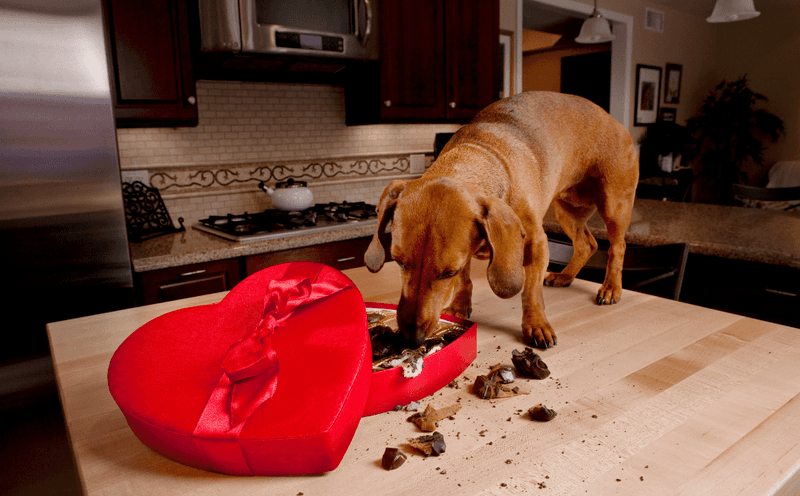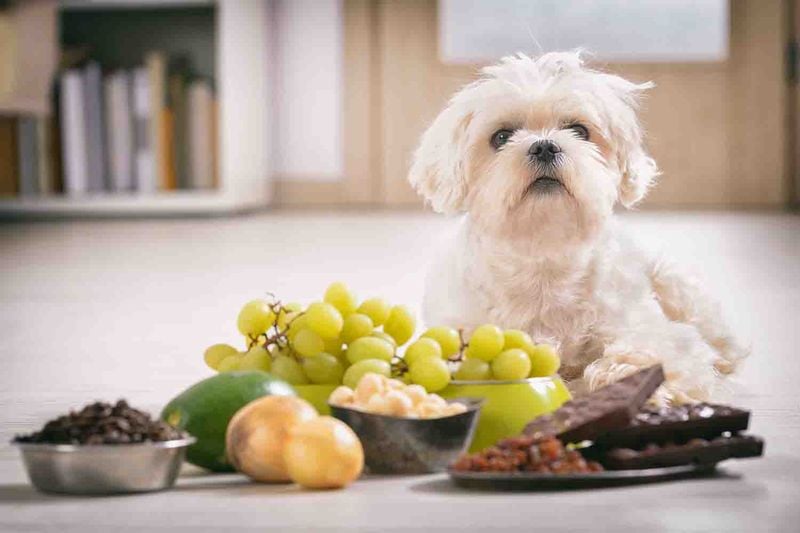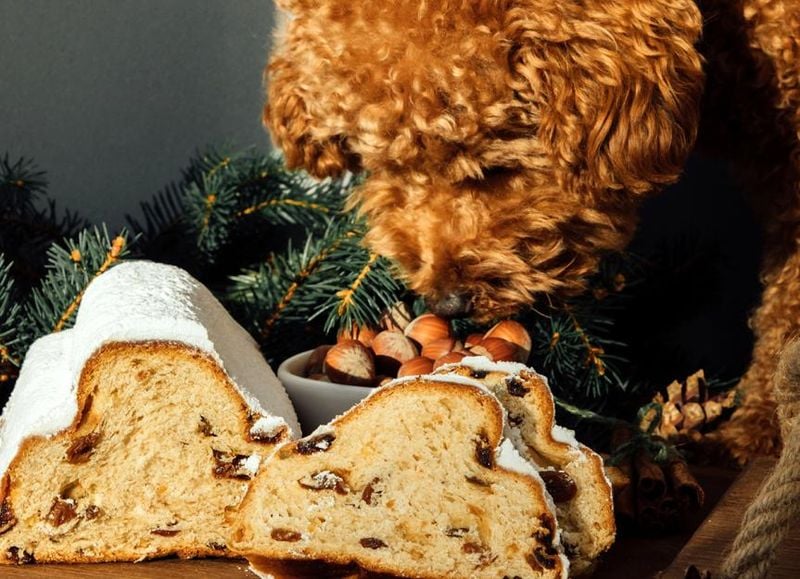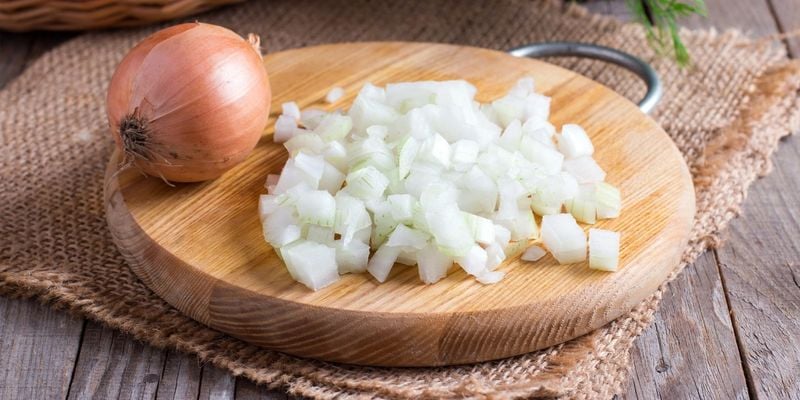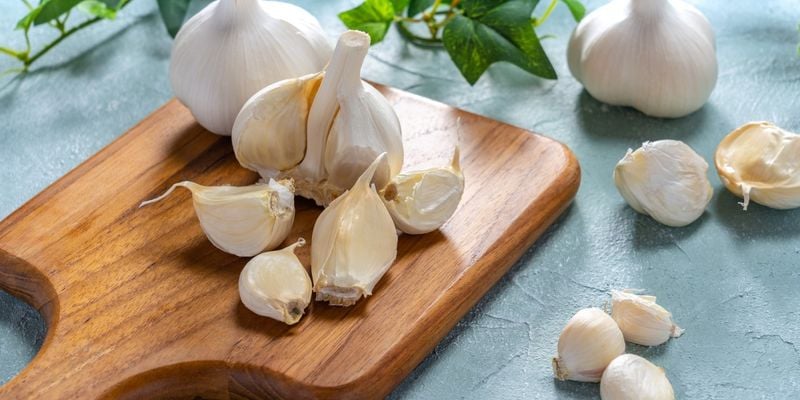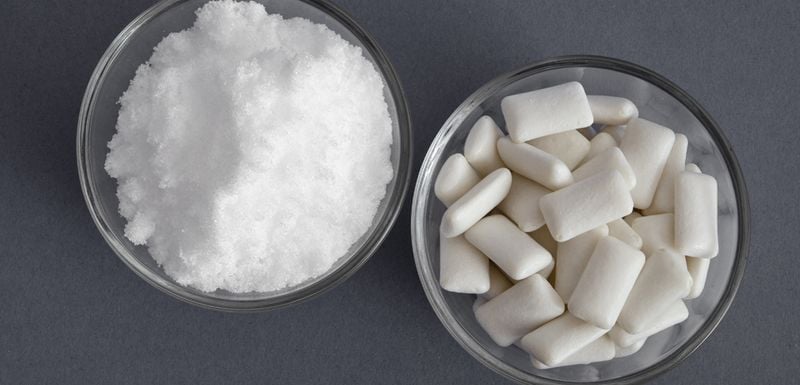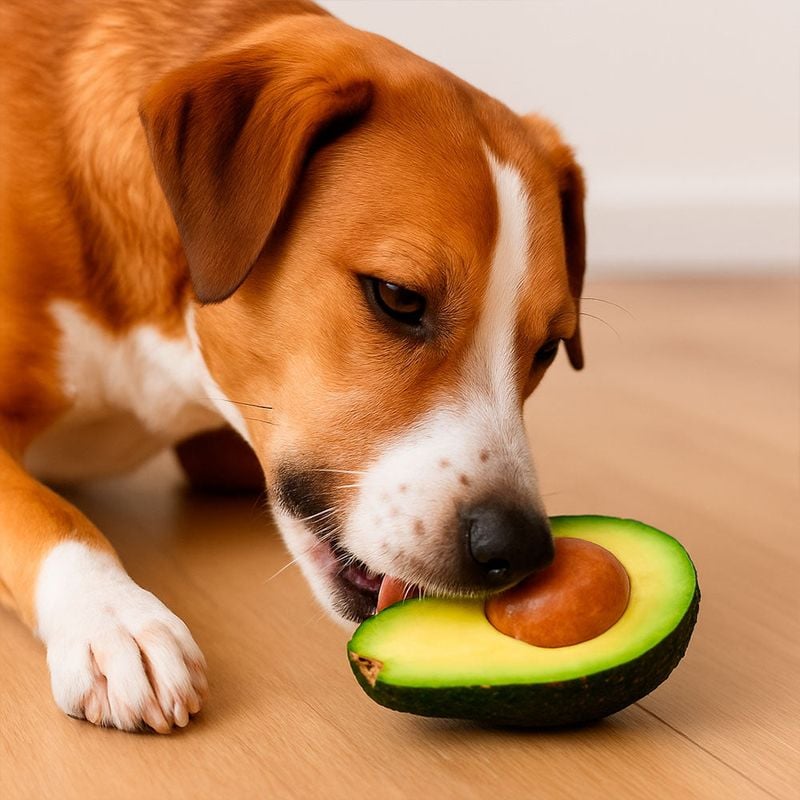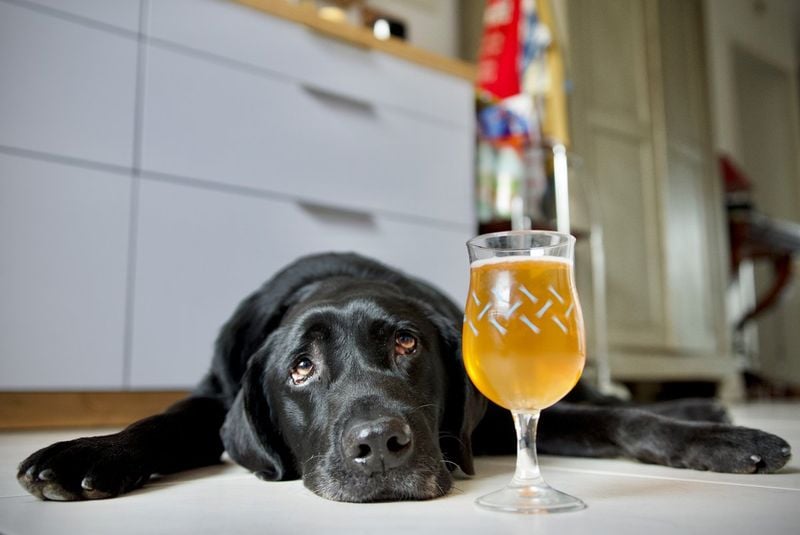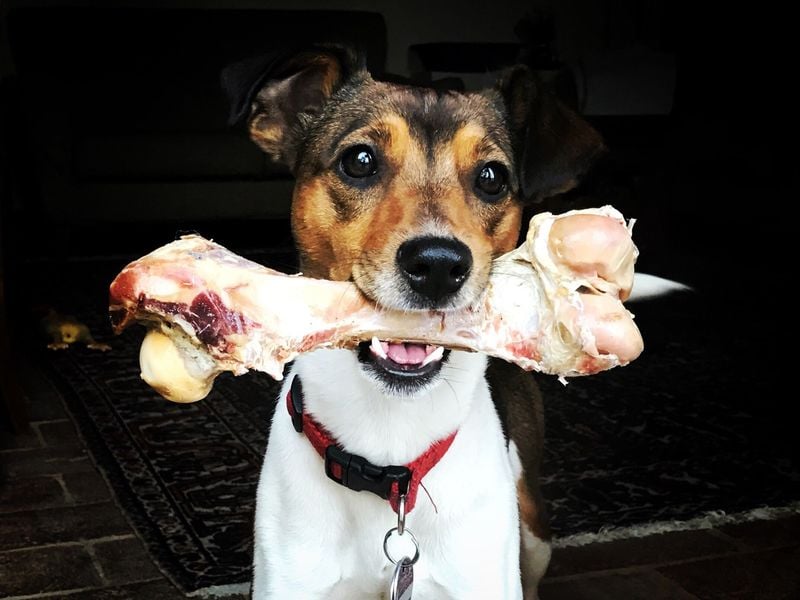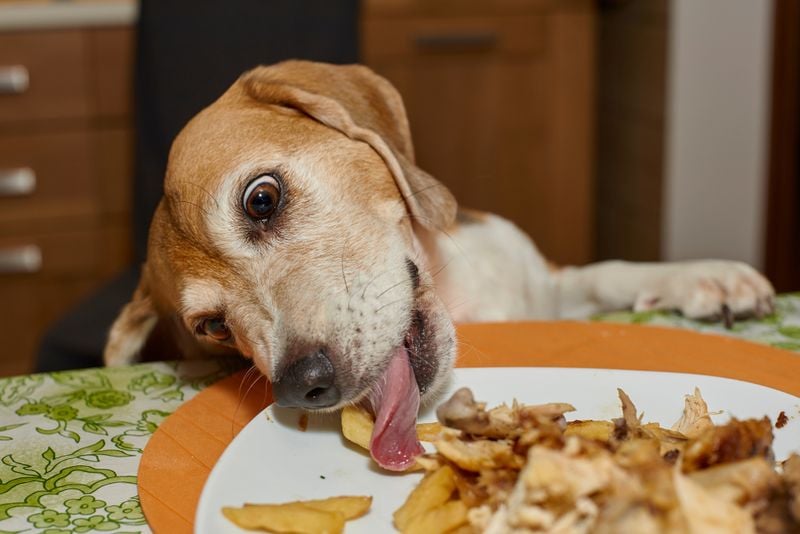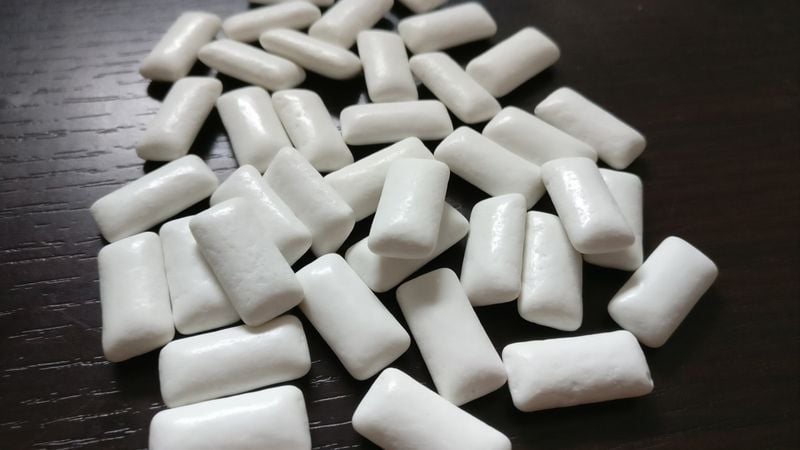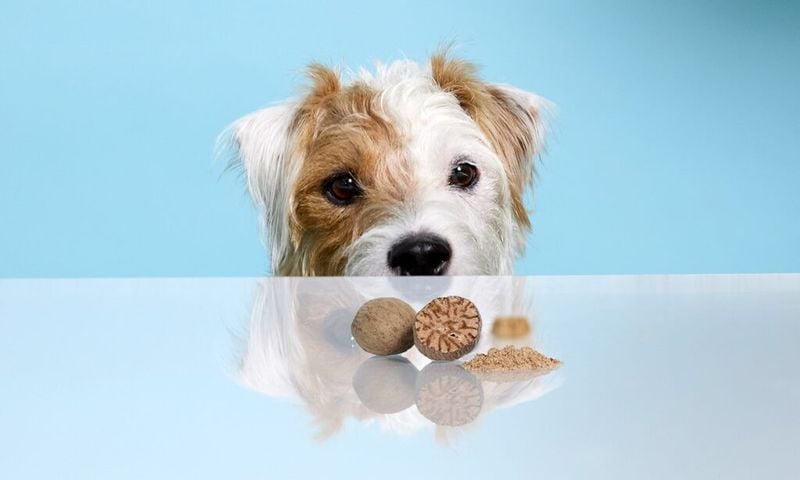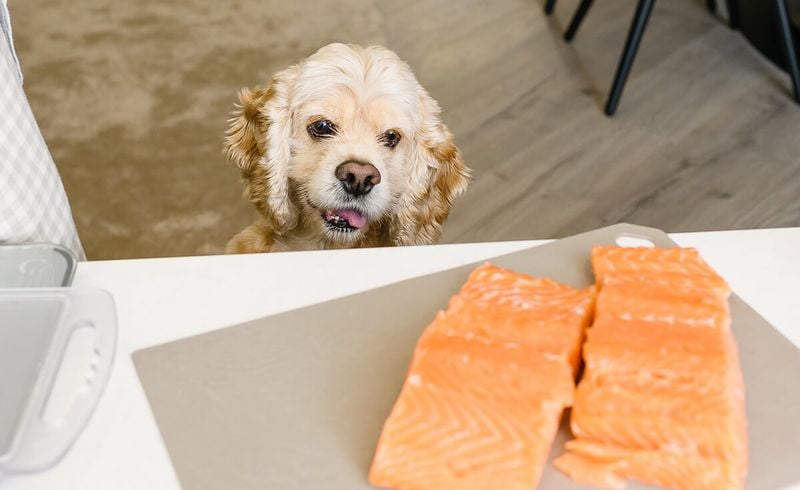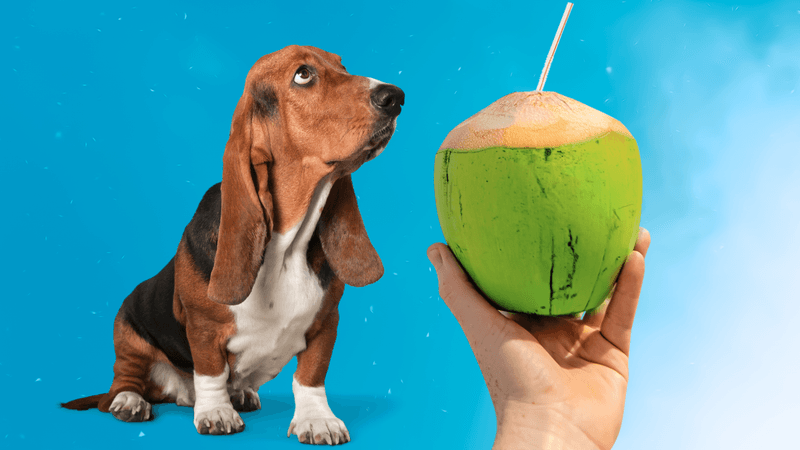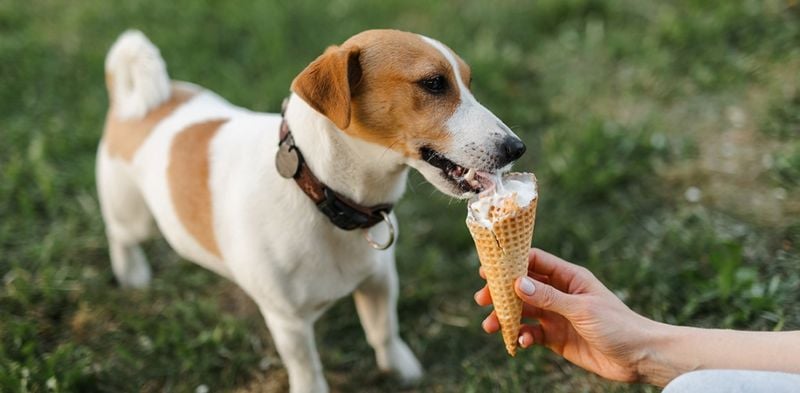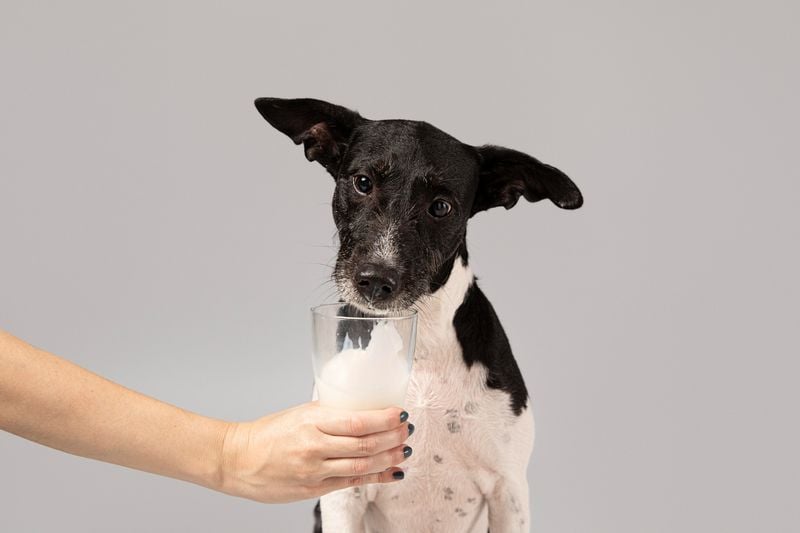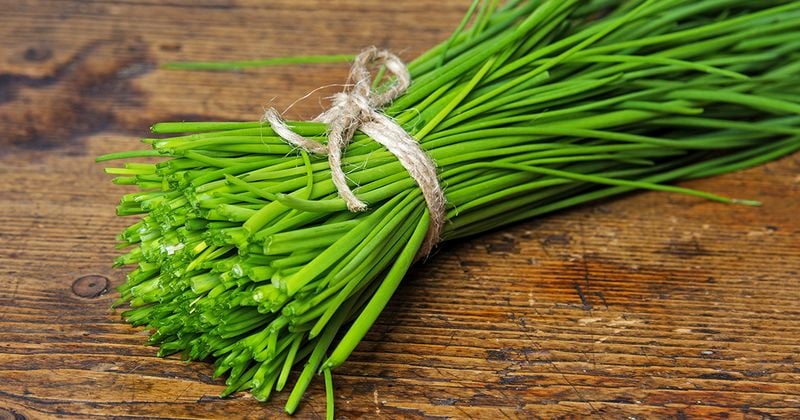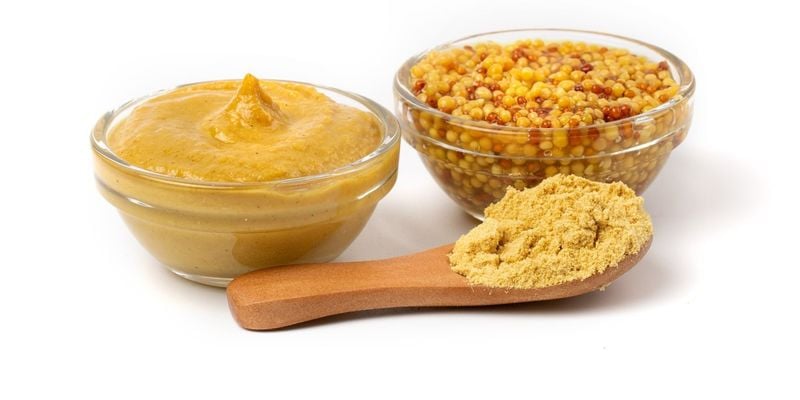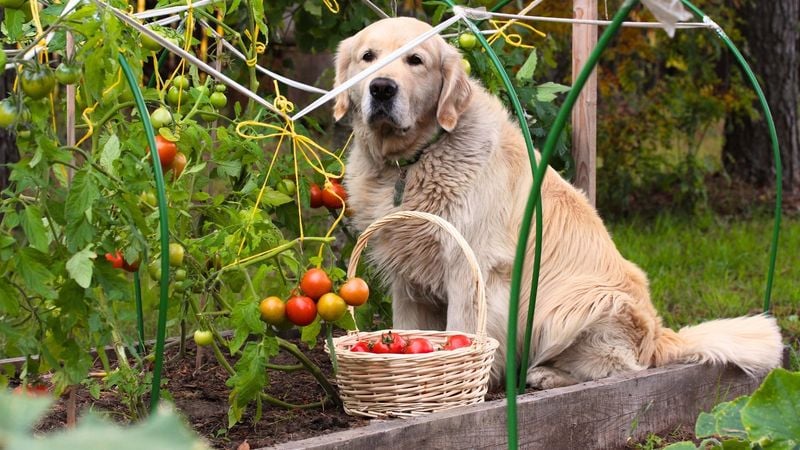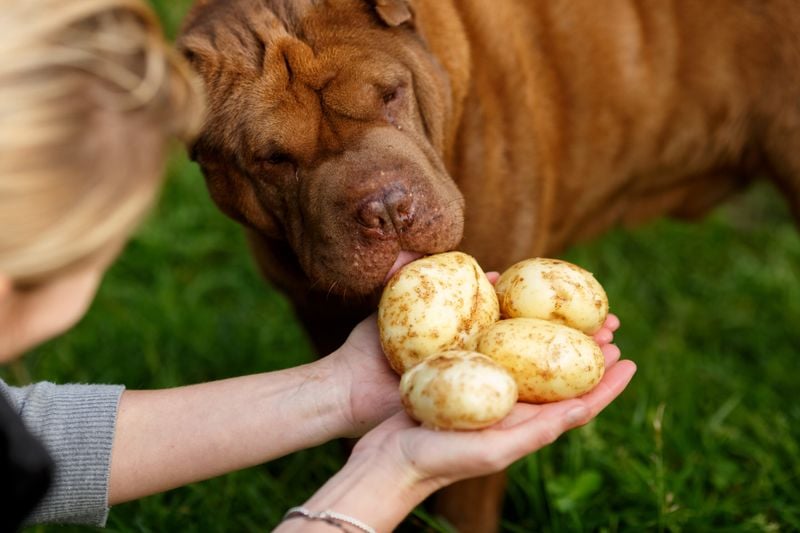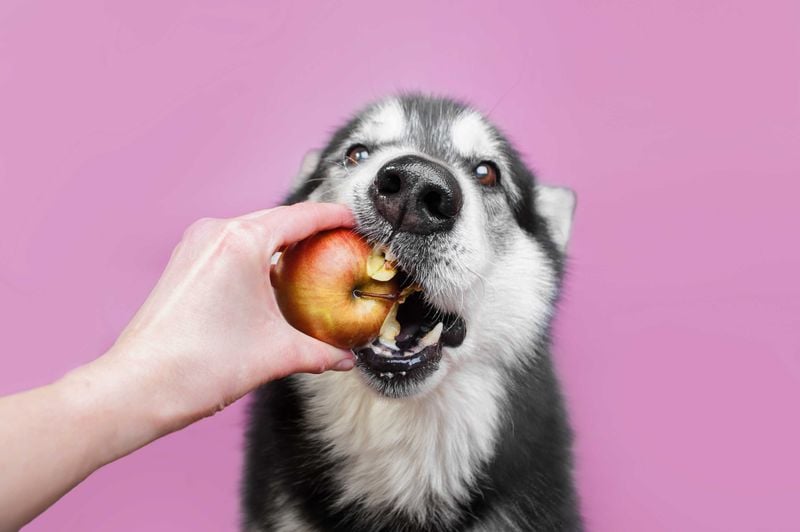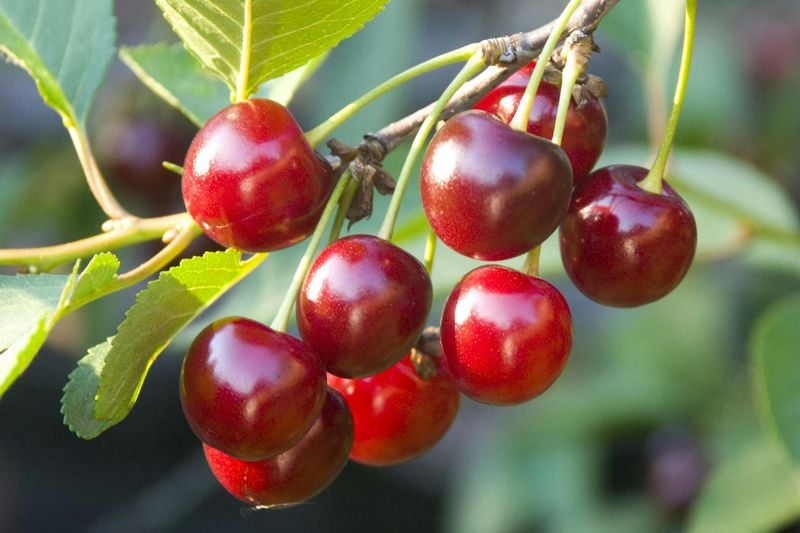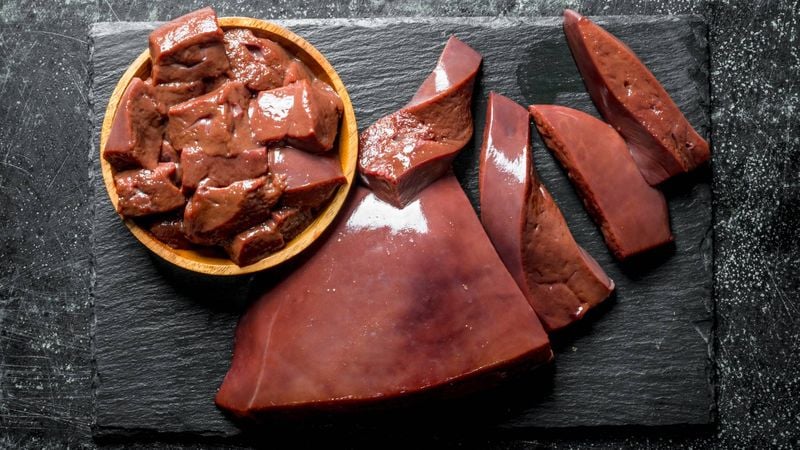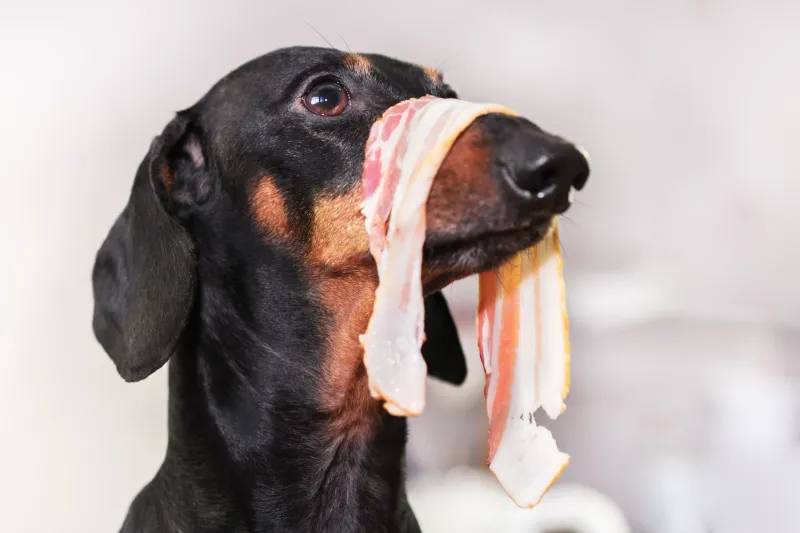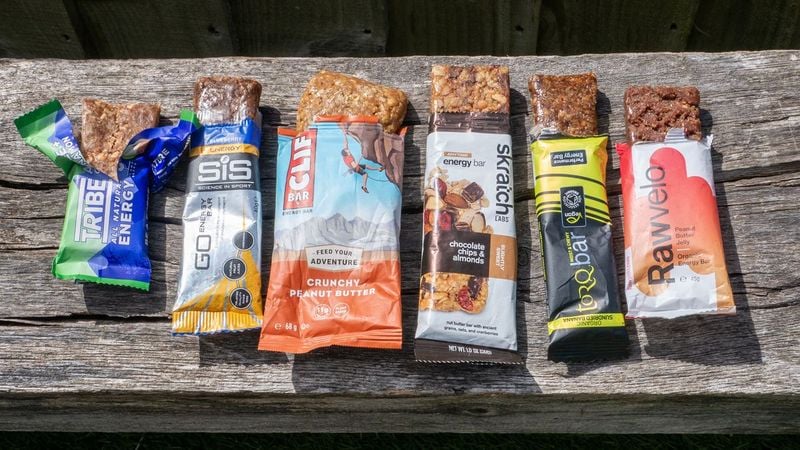35 Human Foods You Should Never Let Your Dog Eat
You might love sharing snacks with your dog, but some human foods can seriously harm them—even in small amounts. What’s harmless or even healthy for us can be toxic for your pup.
From pantry staples to unexpected dangers in your daily meals, many items could lead to digestive issues, seizures, or even life-threatening conditions. Knowing what not to feed your dog is just as important as knowing what’s safe.
It could mean the difference between a happy treat and an emergency vet visit. Here are 35 human foods you should absolutely keep out of your dog’s bowl—no matter how much they beg.
1. Chocolate
What feels like a delicious pick-me-up to you can be deadly for your dog. Chocolate contains theobromine and caffeine, both of which are stimulants that dogs can’t metabolize efficiently. Even small amounts—especially of dark or baking chocolate—can lead to symptoms like vomiting, diarrhea, rapid heart rate, tremors, or seizures.
The severity of the reaction depends on the type and amount of chocolate, as well as your dog’s size. White chocolate has less theobromine, but it’s still not safe. Larger dogs may survive a nibble, but that doesn’t mean it’s risk-free.
Never leave chocolate bars, brownies, or even cocoa powder within reach. When in doubt, a call to the vet is far safer than taking a chance.
2. Grapes
Even just one or two can spark a dangerous reaction in certain dogs. Grapes—and their dried form, raisins—have been linked to sudden kidney failure, though the exact toxic substance remains unknown. What’s especially scary is that the effect doesn’t depend on the dog’s size or breed.
Some dogs might eat grapes and be fine once, only to have a severe reaction the next time. Vomiting, lethargy, and lack of appetite often appear within hours and may quickly progress to kidney shutdown.
Since there’s no reliable way to predict if your dog is susceptible, the safest approach is total avoidance. Don’t let your pup near fruit bowls, trail mix, or baked goods that might contain hidden dangers.
3. Raisins
They may seem small and harmless, but these dried grapes carry the same toxic risk—sometimes an even higher one. Raisins are more concentrated and can trigger acute kidney failure even faster than fresh grapes. Just a few can be life-threatening.
Symptoms typically begin with vomiting, followed by lethargy, decreased appetite, and abdominal pain. The kidneys can shut down rapidly if treatment isn’t started immediately. Sadly, some dogs don’t survive, even with aggressive care.
Raisins often lurk in baked goods, cereals, granola, or snack bars, making them easy to overlook. Keep these items in sealed containers and off counters or tables your dog might reach. When it comes to raisins, zero tolerance is the rule.
4. Onions
Whether raw, cooked, powdered, or dried, they’re all harmful to your dog’s health. Onions contain compounds called thiosulfates, which can damage red blood cells and lead to a dangerous condition called hemolytic anemia.
This condition reduces oxygen flow and may cause symptoms like weakness, vomiting, shortness of breath, and even collapse. While one small piece may not seem like much, regular or large exposures can be deadly.
Watch out for onion in soups, gravies, takeout leftovers, and seasoning blends. Onion powder is particularly concentrated and easy to miss. If your dog eats any form of onion, especially in quantity, contact your vet right away for guidance and possible intervention.
5. Garlic
It’s even more potent than onions when it comes to harming your dog. Garlic contains the same toxic thiosulfates but in higher concentrations, making smaller amounts potentially more dangerous. Some dog owners mistakenly believe garlic repels fleas—but the health risk far outweighs any unproven benefit.
Exposure can result in gastrointestinal upset at first, followed by the destruction of red blood cells. This can cause pale gums, fatigue, and rapid breathing. Dogs may also show signs of abdominal pain and dark-colored urine.
Garlic is often hidden in sauces, dressings, and meats, especially in seasoned human foods. While it enhances flavor for us, it’s a threat to your dog’s blood and overall well-being. Keep it off their plate entirely.
6. Xylitol (in sugar-free gum/candy)
Sweet for humans, but extremely toxic for dogs—even in tiny amounts. Xylitol is a common sugar substitute found in sugar-free gum, candy, peanut butter, baked goods, and even some toothpastes. Once ingested, it causes a rapid insulin release in dogs, leading to dangerously low blood sugar levels.
Symptoms like weakness, vomiting, tremors, and seizures can appear within 10–60 minutes. In more severe cases, xylitol can also lead to liver failure and death. Because it’s often listed on labels in small print, it’s easy to miss until it’s too late.
Check every product before sharing it with your pup. And remember, “sugar-free” should always be a red flag when it comes to dogs.
7. Macadamia Nuts
This rich snack may be a favorite in cookies or trail mix, but it’s incredibly harmful to dogs. Ingesting macadamia nuts can cause severe reactions, including muscle weakness, tremors, vomiting, fever, and lethargy.
Even a handful can trigger symptoms in a medium-sized dog, though thankfully, fatalities are rare. The exact toxin isn’t well understood, but the reaction is consistent across many cases. Symptoms usually appear within 12 hours and can last up to 48 hours.
Macadamia nuts often show up in baked goods, so it’s not just the raw nuts you need to worry about. Keeping them far out of reach ensures your dog won’t suffer this painful, confusing reaction.
8. Avocado
It’s praised as a superfood for humans, but it poses real risks to dogs. Avocados contain a substance called persin, which in large quantities can cause vomiting, diarrhea, and pancreatitis. The skin, pit, and flesh all carry some level of risk.
The pit is especially hazardous because it can cause choking or intestinal blockages. Smaller dogs are more vulnerable, but no breed is completely immune to the effects. Some dogs may tolerate avocado better than others, but it’s not worth testing.
Guacamole and avocado toast might be trendy, but they’re not for pups. When in doubt, skip the avocado entirely to avoid digestive troubles and unexpected vet bills.
9. Alcohol
What might start as a funny party accident can quickly become a medical emergency. Dogs are extremely sensitive to alcohol, whether it’s beer, wine, spirits, or foods cooked with alcohol that haven’t been properly reduced.
Ethanol depresses the central nervous system and can cause disorientation, vomiting, breathing difficulties, tremors, and even coma. Just a small amount can be deadly, especially for small breeds.
Never intentionally give your dog alcohol, and be sure to clean up spills quickly. Even fermented dough can produce alcohol internally, posing a threat. If your pet sneaks a sip, call your vet or an emergency clinic immediately—it’s always better to overreact than wait.
10. Caffeine (coffee/tea/energy drinks)
Perk-you-up drinks like coffee and energy shots are packed with caffeine, a stimulant that dogs simply can’t handle. Caffeine affects the heart, nervous system, and digestive tract—causing symptoms like restlessness, rapid breathing, tremors, and heart palpitations.
Dogs are more sensitive to it than humans, and small doses can cause big problems. Coffee grounds and tea bags are especially dangerous due to their concentrated form. Even caffeine pills or chocolate-covered espresso beans pose a huge risk.
If your dog consumes any caffeinated product, don’t wait for symptoms to appear. Contact your vet immediately. Keeping drinks out of reach and trash bins secured can prevent a scary accident before it starts.
11. Cooked Bones
They might seem like the perfect treat, but cooked bones can shatter into razor-sharp fragments. Unlike raw bones, which are softer and somewhat safer under supervision, cooked bones are brittle and can splinter easily when chewed.
Those splinters can puncture the digestive tract, leading to choking, internal bleeding, or life-threatening blockages. Chicken, turkey, and pork bones are among the worst offenders due to their size and fragility.
Even if your dog seems to enjoy gnawing on them without issue, the risk remains. It’s just not worth it. Safer chew options like rubber toys or vet-approved dental treats are a much better choice for your dog’s health and happiness.
12. Fat Trimmings
Slipping your dog bits of fatty meat might feel like a reward, but it can backfire fast. High-fat foods—especially cooked fat trimmings—can lead to pancreatitis, a painful and potentially fatal condition that causes the pancreas to become inflamed.
Pancreatitis symptoms include vomiting, abdominal pain, lethargy, and loss of appetite. Dogs with sensitive stomachs or underlying health issues are especially vulnerable. Over time, frequent fatty scraps can also contribute to obesity and long-term health decline.
It’s tempting to share leftovers, but if they’re greasy or fatty, resist the urge. A healthier treat or lean meat option will keep your dog satisfied without compromising their digestive health.
13. Raw Dough (with yeast)
What starts as harmless baking prep can become a medical emergency if your dog sneaks some raw dough. Yeast dough continues to rise in a dog’s warm stomach, expanding and causing bloating, discomfort, and potentially life-threatening complications.
Worse still, as the yeast ferments, it produces alcohol inside the body, which can lead to alcohol poisoning. Symptoms may include uncoordinated movement, vomiting, and collapse. Some dogs even require surgery to relieve the pressure.
Keep dough-covered counters and baking stations dog-free. If your pup eats any rising dough, it’s an emergency situation. Quick action can make the difference between a scare and a tragedy.
14. Moldy Food
That leftover bread or forgotten fridge item might seem harmless, but moldy food can harbor tremorgenic mycotoxins, which are extremely dangerous for dogs. These toxins can cause muscle tremors, seizures, vomiting, and even death.
While some molds only cause mild digestive upset, others are far more potent. Since you can’t always tell the difference by appearance, it’s never safe to let your dog “clean up” old food.
Take special care with compost piles, garbage bins, and fridge clean-outs. If your dog raids the trash and eats moldy scraps, call your vet immediately. Early treatment can help prevent more serious neurological symptoms from setting in.
15. Raw Eggs
Feeding raw eggs to dogs is risky for several reasons. First, there’s the threat of salmonella, which can make both your dog and household members sick. Second, raw egg whites contain avidin, a compound that interferes with biotin absorption—an essential B vitamin.
Over time, too many raw eggs can lead to a biotin deficiency, resulting in skin problems, poor coat health, and developmental issues in puppies. Although eggs are nutritious when cooked, the raw form brings more harm than good.
If you want to share eggs with your dog, scrambled or boiled without seasoning is the safest option. The raw food trend isn’t worth the risk when it comes to this protein source
16. Salt (in large amounts)
While dogs need some sodium to function, too much can tip the balance from essential to dangerous. High salt intake can lead to sodium ion poisoning, especially if your dog doesn’t have access to enough fresh water afterward.
Symptoms can include vomiting, diarrhea, tremors, elevated body temperature, and seizures. In severe cases, excessive salt can lead to swelling of the brain, coma, or death. Salty snacks like chips, pretzels, or cured meats might seem like harmless nibbles, but they often contain far more sodium than dogs can safely handle.
Always read labels and avoid sharing anything heavily seasoned. Keep salty human foods as far from your dog’s dish as possible to protect their health.
17. Chewing Gum (with or without xylitol)
It’s not just sugar-free varieties you need to worry about. Even gum that doesn’t contain xylitol can pose a serious choking or blockage risk. Dogs don’t understand that gum isn’t food—they’ll swallow it whole if given the chance.
If the gum contains xylitol, the danger multiplies. It can lead to a sudden insulin spike and plummeting blood sugar, followed by seizures or liver failure. Even one piece can be enough to cause serious symptoms in a small dog.
Emptying pockets, keeping purses zipped, and trash bins covered can help prevent accidental ingestion. Gum may be a daily habit for you, but for dogs, it’s a toxic trap.
18. Nutmeg
Often found in baked goods and holiday dishes, nutmeg contains a toxin called myristicin that’s harmful to dogs in large quantities. It affects the nervous system and can cause disorientation, hallucinations, increased heart rate, and even seizures.
Just a sprinkle might not cause an issue, but dogs are more sensitive to spices than humans, and effects can be unpredictable. Symptoms usually appear within a few hours and can last up to 48 hours.
Nutmeg is commonly combined with other risky ingredients like raisins or chocolate in seasonal treats. Keep spiced cookies, pumpkin pie, and anything containing this fragrant spice well out of paw’s reach.
19. Blue Cheese
Cheese may feel like a safe treat, but blue varieties come with extra risk. They contain a fungus that produces roquefortine C, a substance toxic to dogs. Ingesting blue cheese can lead to vomiting, diarrhea, muscle tremors, and seizures.
Some dogs may react strongly to even small quantities. The richer and smellier the cheese, the more dangerous it is. It’s not just the fungus that’s an issue—blue cheese is also high in fat and salt, both of which can contribute to pancreatitis and sodium imbalances.
Stick with plain, low-fat cheeses in moderation if you must share. But when it comes to blue cheese, don’t let your dog near it.
20. Raw Fish (especially salmon)
Uncooked fish, especially salmon from the Pacific Northwest, can harbor a parasite called Neorickettsia helminthoeca that causes salmon poisoning disease. This condition can be fatal if not treated quickly.
Infected fish may look and smell normal, making the risk hard to spot. Once consumed, symptoms like vomiting, fever, swollen lymph nodes, and diarrhea may appear within six days. Left untreated, dogs can deteriorate rapidly.
Cooking fish thoroughly destroys the parasite and makes it safe to eat. So while fish can be a healthy protein source, serving it raw—particularly from questionable origins—can put your dog’s life in danger. Always err on the side of caution.
21. Coconut Water
Despite its popularity as a health drink, coconut water isn’t a smart choice for dogs. It contains high levels of potassium, which can disrupt your dog’s electrolyte balance and potentially lead to heart rhythm abnormalities.
A few sips might not cause harm, but regularly offering it or giving large amounts could result in lethargy, weakness, or even collapse. Dogs with kidney or heart issues are especially vulnerable to excess potassium.
It’s important not to confuse coconut water with small amounts of plain coconut flesh or oil, which are safer in moderation. When it comes to hydration, fresh water remains the best and safest option for your four-legged friend.
22. Cinnamon
This aromatic spice may be great in baked goods, but it can irritate your dog’s mouth and digestive system. Ingesting cinnamon—especially in its powdered form—can cause coughing, choking, and breathing issues if inhaled.
If consumed in large amounts, it can lower blood sugar too much, leading to symptoms like weakness, vomiting, and even liver damage in extreme cases. Essential oils containing cinnamon are even more dangerous and should never be used near pets.
Cinnamon is often hidden in pastries, cereals, and flavored snacks, so always check the ingredients before sharing. While not usually deadly, it can cause significant discomfort that’s easily avoidable.
23. Ice Cream
Many dogs love the taste, but traditional ice cream is loaded with sugar and lactose—two things that don’t sit well with most pups. Dogs are often lactose intolerant, meaning they can’t properly digest dairy, leading to gas, bloating, and diarrhea.
In addition to digestive upset, ice cream may contain artificial sweeteners like xylitol or flavorings like chocolate, both of which are toxic. Even seemingly safe flavors like vanilla often have more sugar than your dog can handle.
If you want to treat your pup, choose specially formulated dog-friendly frozen treats. Regular ice cream may be a nostalgic indulgence for you, but it’s a recipe for a very messy dog day.
24. Milk & Dairy
While it might seem harmless to pour your dog a splash of milk or share a bit of cheese, dairy can be problematic for many dogs. As they age, most dogs lose the enzyme needed to properly digest lactose.
This can lead to bloating, cramping, and diarrhea after even small amounts. Cheeses and yogurts may be lower in lactose but often contain high amounts of fat and salt, which pose their own risks.
Some dogs tolerate small quantities, but it’s best not to assume yours will. If you want to offer a dairy-like treat, consider lactose-free options made specifically for pets to avoid unnecessary tummy trouble.
25. Chives
Part of the same allium family as garlic and onions, chives are another stealthy toxin that many dog owners overlook. They contain compounds that can destroy red blood cells and lead to hemolytic anemia if ingested in sufficient quantities.
Symptoms include weakness, vomiting, pale gums, and increased heart rate. Even small amounts, especially over time, can accumulate and cause serious problems. Chives are often used in sauces, dips, and garnishes, making accidental ingestion easy.
If you’re preparing meals with fresh herbs, keep your dog out of the kitchen. While chives may add flavor to your dish, they can silently wreak havoc on your dog’s health.
26. Mustard Seeds
What adds a tangy kick to your sandwich can be a real problem for your pup. Mustard seeds are known to irritate a dog’s gastrointestinal tract, often leading to vomiting, diarrhea, and abdominal pain. Even small quantities can cause discomfort.
In large doses, mustard can result in inflammation of the digestive lining, which might require veterinary treatment. Prepared mustards often contain other harmful ingredients too—like garlic, onion powder, or vinegar—compounding the risk.
Dogs don’t benefit from spicy condiments, and the discomfort far outweighs any momentary interest they might show. Always scrape off sauces or spreads from shared bites, and avoid feeding your dog anything flavored with mustard altogether.
27. Tomato Leaves & Stems
Tomatoes themselves, especially ripe ones, aren’t the biggest danger—but the leaves, stems, and unripe green fruit contain solanine, a toxic alkaloid for dogs. Solanine affects the nervous system and can cause drooling, stomach upset, tremors, or even seizures.
Dogs that nibble on garden plants or counter scraps might inadvertently consume these parts without your knowledge. While they’d need to eat a decent amount to suffer severe poisoning, the risk is real—especially for smaller dogs.
If you grow tomatoes at home, keep the plants fenced off or out of reach. Remove any leaves or stems from scraps before discarding them to prevent curious pups from snacking where they shouldn’t.
28. Green Potatoes
When potatoes are exposed to light, they produce chlorophyll and solanine—turning them green and highly toxic to dogs. These compounds can irritate the digestive tract and affect the nervous system, causing symptoms like nausea, lethargy, tremors, or even cardiac issues.
Raw or improperly cooked potatoes are the most dangerous, especially if the skin is still on. Green skin is a warning sign that the solanine levels are elevated. Even humans are advised to avoid green potatoes, but for dogs, the tolerance threshold is much lower.
Cooked, plain potatoes in moderation can be safe. Just make sure they’re fully peeled, free from green spots, and never seasoned with garlic, onion, or salt.
29. Apple Seeds
Though apples themselves are safe and nutritious for dogs, the seeds contain amygdalin—a compound that turns into cyanide when chewed and digested. While one or two seeds likely won’t harm a large dog, repeated exposure or a full core can be dangerous.
Cyanide interferes with the body’s ability to transport oxygen, potentially leading to breathing difficulties, lethargy, or worse in severe cases. It’s an invisible risk in an otherwise healthy fruit.
When sharing apple slices with your dog, always remove the core and seeds first. It only takes a second, but it can prevent an unnecessary health scare—and give you peace of mind while treating your pup.
30. Peach & Cherry Pits
Besides being a choking hazard, peach and cherry pits contain cyanogenic compounds that convert into cyanide once inside the body. A swallowed pit may pass harmlessly—or it might get lodged in the throat or intestine, causing a dangerous blockage.
Chewing the pit is even riskier. Cyanide poisoning symptoms include dilated pupils, difficulty breathing, and bright red gums. In large enough quantities, it can be fatal. The hard shell of the pit can also damage teeth or irritate the digestive tract.
Fruit flesh is fine in moderation, but always pit the fruit first and monitor your dog closely. Don’t let fallen stone fruits in your yard turn into a deadly snack.
31. Hops (used in brewing beer)
This lesser-known danger can have devastating consequences if your dog ingests it. Hops, used in brewing beer, can trigger a condition called malignant hyperthermia in dogs. It causes a sudden and extreme spike in body temperature that can lead to organ failure and death if not treated immediately.
Signs of hops poisoning include excessive panting, restlessness, rapid heartbeat, vomiting, and seizures. Even small amounts—fresh or spent—can be hazardous, especially to breeds like Greyhounds, who are more sensitive to temperature changes.
If you homebrew or know someone who does, always store hops securely and dispose of them safely. The brewing process may be fascinating, but for dogs, hops are nothing short of lethal.
32. Liver (in large amounts)
Though rich in nutrients like vitamin A and iron, liver can become dangerous when overfed. Too much of it—especially if given daily—can lead to vitamin A toxicity, a condition that causes bone deformities, joint pain, and muscle weakness in dogs.
Iron overload is another concern, particularly for smaller dogs or those with underlying health conditions. While liver can be a healthy occasional treat, moderation is key. A few bites once a week is generally safe, but anything more frequent should be discussed with your vet.
Cooked liver is safer than raw, but the quantity still matters. Don’t be fooled into thinking “superfood” means unlimited. Too much of a good thing can be harmful, even for dogs.
33. Bacon
Crispy, salty, and aromatic—bacon might smell irresistible to your dog, but it’s a nutritional nightmare. It’s packed with saturated fat and sodium, both of which can trigger pancreatitis, a painful inflammation of the pancreas.
High-fat foods like bacon can also cause long-term issues like obesity, high cholesterol, and heart disease. Even small scraps from your breakfast plate can upset a dog’s stomach and lead to vomiting or diarrhea.
Bacon grease is equally harmful and should never be added to your dog’s food. If you want to treat your pup to something savory, opt for lean, cooked meats without seasoning. Leave bacon as a guilty pleasure for humans only.
34. Processed Meats (like deli meats)
Sliced meats might seem like a convenient snack for your dog, but they’re often loaded with preservatives, sodium, and spices that can wreak havoc on a dog’s system. Ingredients like garlic powder and excessive salt are particularly common and highly toxic.
Processed meats can contribute to high blood pressure, kidney strain, and long-term organ damage. Even if your dog seems to tolerate them well, frequent exposure can silently deteriorate their health.
Plus, many deli meats contain nitrates and nitrites, which are harmful in large quantities. Stick to fresh, unseasoned meats in small portions if you want to share a protein treat—your dog’s body will thank you.
35. Energy Bars/Protein Bars
What powers you through a workout can put your dog in the ER. Many energy and protein bars contain ingredients that are extremely dangerous to dogs—like chocolate, xylitol, raisins, and caffeine. Even “natural” varieties often include protein powders or nuts that dogs can’t digest safely.
These bars are highly concentrated in calories and nutrients designed for human metabolism, not canine. Just one bar might be enough to cause vomiting, restlessness, or more serious symptoms like seizures or liver damage.
Keep protein snacks stashed in sealed containers or high cupboards. While they’re great for refueling after a run, they’re a toxic trap waiting to happen for curious, hungry pups.

